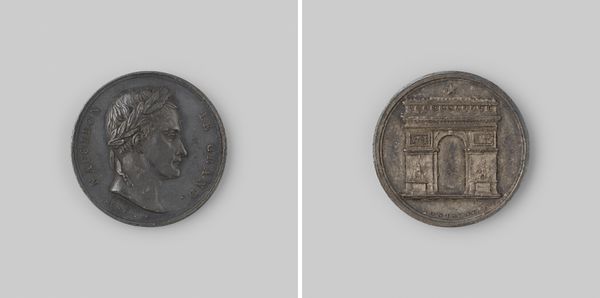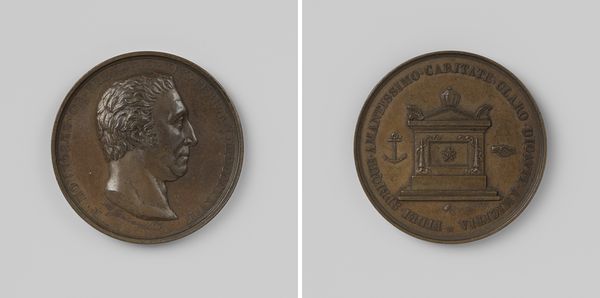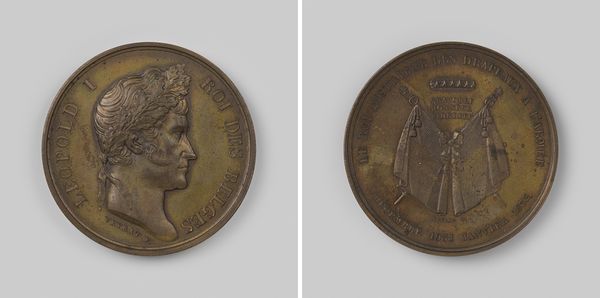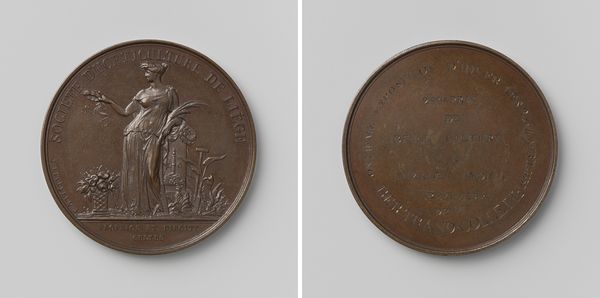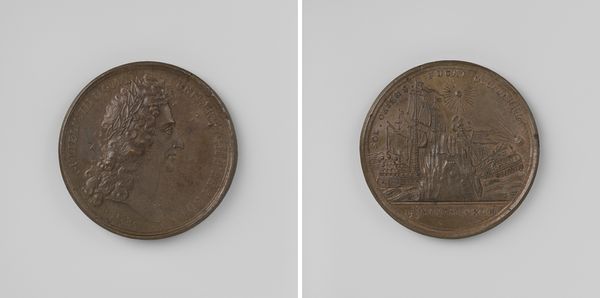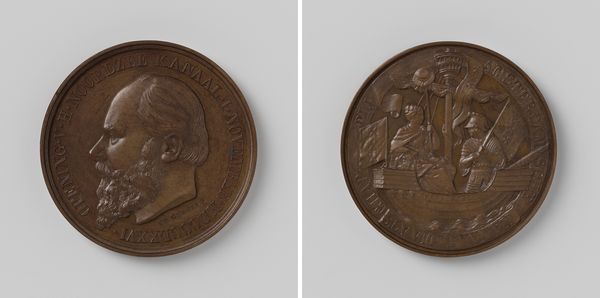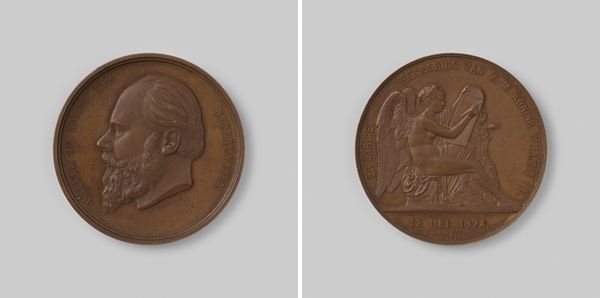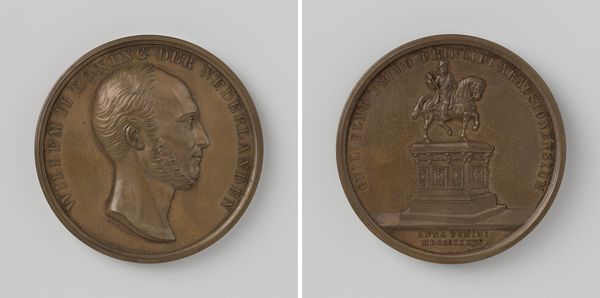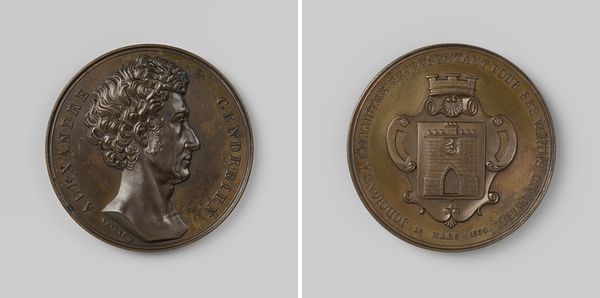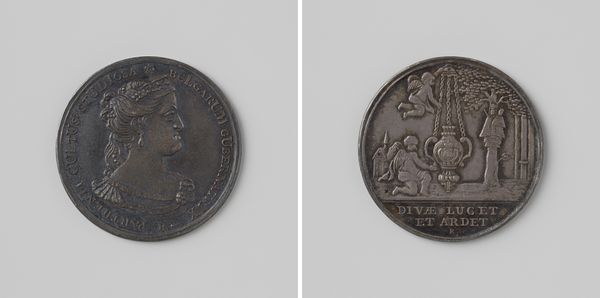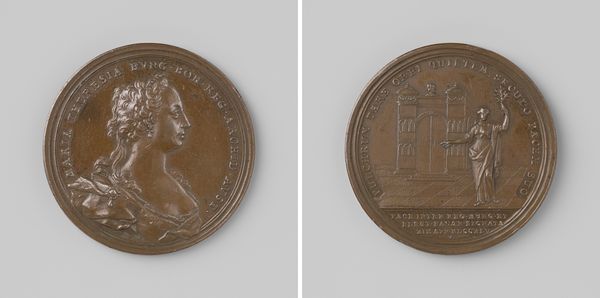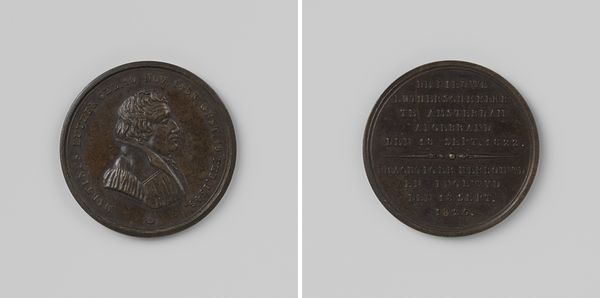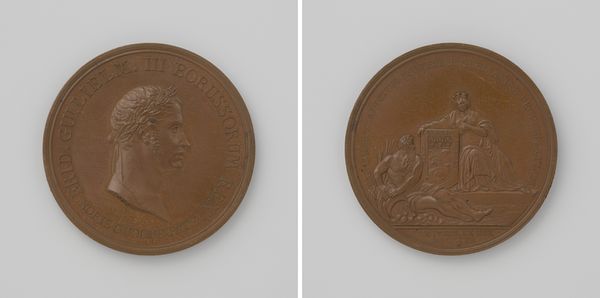
Voltooiing van de Arc de Triomphe te Parijs, ter ere van Lodewijk Filips, koning der Fransen en Napoleon I Bonaparte, keizer der Fransen 1836
0:00
0:00
metal, relief, sculpture
#
portrait
#
neoclacissism
#
metal
#
sculpture
#
relief
#
sculpture
#
history-painting
Dimensions: diameter 2.6 cm, weight 8.72 gr
Copyright: Rijks Museum: Open Domain
Curator: Today we are looking at a metal relief from 1836 by Jean Pierre Montagny. Its lengthy title is, "Completion of the Arc de Triomphe in Paris, in honor of Louis-Philippe, King of the French, and Napoleon I Bonaparte, Emperor of the French." Editor: Intriguing juxtaposition. I immediately see the formal balance struck on the medal's face, with those opposing portraits framing what looks like a celebration of national pride and unity despite differing leadership. Curator: It’s fascinating how the artist brings together the king and former emperor in this metalwork. Considering Montagny’s process, one must ponder the socio-political dynamics. How was the piece commissioned and distributed to convey specific messages about political legitimacy and historical continuity during that transition of power? Editor: Agreed, but aesthetically speaking, look at the contrast! One side shows profile portraits, classical in form, very stoic; on the other, the Arc itself, architecturally rigid, yet softened by the round shape of the coin, and a bit worn with age perhaps adding another dimension. Semiotically it suggests an arc completed between leaders as well as in architectural form. Curator: The piece embodies neoclacissism. In addition, it is important to know that it probably required meticulous die-making and striking processes—labor-intensive techniques. How would ordinary people during Louis-Philippe's reign access or consume art like this medal? Did it become a symbol of accessible nationalism, or primarily an object circulating within elite circles? Editor: Materially, the cool, weighty bronze lends a gravitas and permanence befitting a historical monument and national leaders. The relief itself—shallower in depth than you often see—creates subtle shadows to define the architectural and facial features; its circular form provides wholeness, a feeling of cohesion between past and present. Curator: Looking closely, considering how the means of artistic production and accessibility shaped the medal's function as a symbol of French national identity. It highlights that tensions inherent in attempting to fuse monarchical legitimacy and Bonapartist imperial legacy within post-revolutionary French society, making it so powerful. Editor: Ultimately, by examining how visual choices construct this representation—circular format and relief technique—can help you understand French leaders. Each side adds a voice of history, culminating to shape collective identity through national memory.
Comments
No comments
Be the first to comment and join the conversation on the ultimate creative platform.
